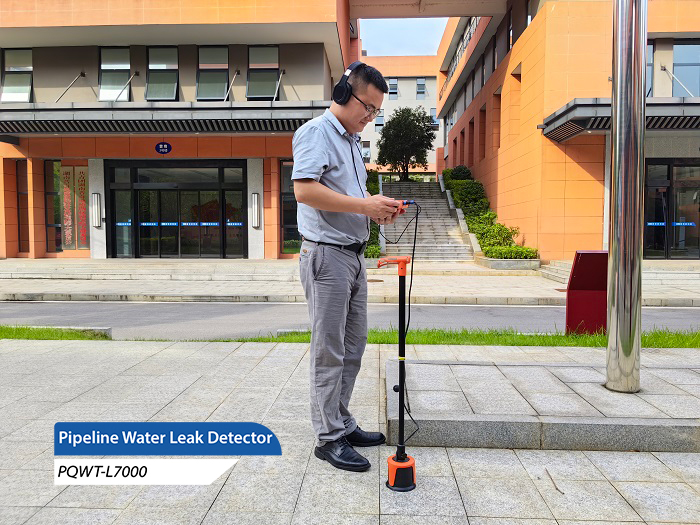Pipeline leak detection is a task that requires a high degree of expertise, especially when faced with the complexities of micro leaks, noise interference and crosstalk at the point of leakage. In this article, we'll discuss how to effectively address these challenges and ensure that even the smallest leaks can be pinpointed.

Strategies for detecting microleaks
Microleaks are often difficult to capture due to their faint sound. At this point, the use of a water-air mixing and pumping method becomes an effective solution. This method injects a mixture of water and air into the pipeline, transforming the original single water flow sound into a more recognizable water-air mixture bubbling sound. Under normal circumstances, the sound of water leakage should manifest itself as a continuous impact, tumbling or disturbing sound, and this combined noise is more easily captured by the acoustic vibration pipeline leak detector than the sound of water flow alone.
Tips for dealing with noisy interference
When performing water leak detection in a noisy environment, murmurs can seriously affect the accuracy of the pipeline leak detector. To solve this problem, leak detectors need to focus on sound signals within a specific frequency range. 400~800Hz is a common frequency band for water leakage sound, and by monitoring the sound intensity in this band, extraneous noise can be effectively filtered. In addition, using instruments with filtering and analyzing functions to monitor only the sound in this frequency band can help to separate the real water leakage signal from the background noise.
Strategies for solving crosstalk at the point of leakage
Crosstalk, in which the sounds of multiple leaks interfere with each other, may occur when the piping around the leak is dense or when the leak forms a cavity, making localization difficult. In the face of this situation, leak detectors must have a high degree of patience and meticulous observation. By analyzing the differences in the sound of water leakage at different frequencies, the subtle characteristics of the real leakage point can be identified, so as to accurately determine the location of water leakage in the complex crosstalk environment.
Conclusion
Pipeline leakage detection is a science that combines theoretical knowledge and practical experience. Facing the challenges of microleakage, noise interference and crosstalk at leakage points, it is crucial to skillfully master and apply the above strategies to improve the detection efficiency and accuracy. Through the study of this article, we hope to provide practical guidance to professionals engaged in pipeline inspection work, helping them to be more skillful in their daily work and ensuring that every drop of precious water is not wasted.
In future practice, continuous technological innovation and professional training will continue to promote the development of pipeline leakage detection technology, bringing greater benefits to building maintenance and water resource management.








